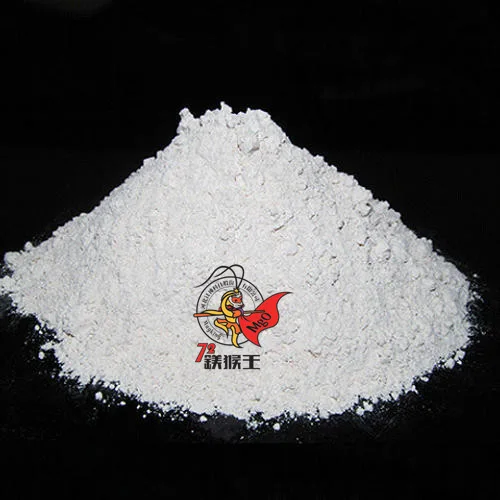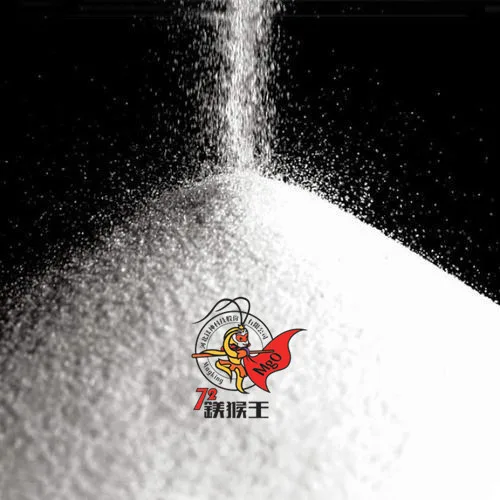Light magnesium oxide (MgO) is a versatile material widely used in various industries due to its unique physical and chemical properties. It is primarily obtained by calcining magnesium carbonate or magnesium hydroxide at lower temperatures, resulting in a fine, porous structure with a high specific surface area. Because of its lightweight and reactive nature, light magnesium oxide finds applications in rubber, plastics, catalysts, medicine, food, environmental protection, and electronic materials. This article explores its preparation, key applications, and differences from heavy magnesium oxide.
What is Light Magnesium Oxide?
Light magnesium oxide is a white, loose, and highly porous powder characterized by its small particle size and large surface area. The material is produced by thermal decomposition of magnesium compounds at controlled temperatures to achieve the desired particle morphology and reactivity.

Preparation Method
Light magnesium oxide is typically produced using one of the following methods:
- Calcination of Magnesium Carbonate (MgCO₃): Magnesium carbonate is heated at lower temperatures (between 450°C and 900°C), ensuring the formation of a fine powder with high reactivity.
- Calcination of Magnesium Hydroxide (Mg(OH)₂): By controlling the temperature and atmosphere, a lightweight, highly reactive form of magnesium oxide is obtained.
- Precipitation Method: Magnesium salts such as magnesium chloride (MgCl₂) or magnesium sulfate (MgSO₄) react with alkaline substances, followed by calcination at optimized conditions.
These controlled conditions lead to the formation of light magnesium oxide with a porous structure, making it highly effective in various industrial applications.
Main Uses of Light Magnesium Oxide
Due to its high reactivity and large surface area, light magnesium oxide serves a critical role in multiple industries.
Rubber and Plastic Industry
In rubber and plastic production, light magnesium oxide acts as:
- A filler and reinforcing agent to enhance mechanical properties.
- An acid neutralizer during vulcanization to prevent degradation.
- A stabilizer that extends the lifespan of rubber products by minimizing aging effects.
These properties make it an essential component in high-performance rubber products, such as automotive parts and industrial seals.
Catalysts and Carriers
Light magnesium oxide is widely used as a catalyst carrier in chemical industries. Its porous nature allows for increased surface area, promoting better dispersion of active catalytic agents. This makes it useful in:
- Petrochemical processing.
- Environmental catalysis for pollutant removal.
- Production of fine chemicals.
Its high thermal stability also makes it suitable for high-temperature catalytic reactions.
Medicine and Food
In the medical and food industries, light magnesium oxide has critical applications, including:
- Antacid: Used to neutralize excess stomach acid and relieve heartburn.
- Food Additive: Acts as a pH regulator, anti-caking agent, and magnesium supplement.
- Pharmaceutical Excipient: Used in tablet formulations to improve consistency and stability.
Its non-toxic and bio-compatible nature makes it a safe choice in food and healthcare applications.
Environmental Protection Field
Light magnesium oxide plays a role in environmental applications, such as:
- Wastewater Treatment: Neutralizing acidic waste and removing heavy metals.
- Air Purification: Used in desulfurization processes to reduce sulfur emissions from industrial gases.
- Soil Treatment: Enhancing soil properties by adjusting pH levels and improving nutrient absorption.
These applications make it a valuable component in sustainable environmental solutions.
Electronic Materials
Magnesium oxide is used in the electronics industry:
- Insulating Materials: Applied in electrical insulation due to its high dielectric strength.
- Ceramic Substrates: Used in high-performance ceramics for thermal and electrical insulation.
- Coating Materials: Protecting sensitive electronic components from corrosion and thermal degradation.
Its heat-resistant and electrical insulating properties make it a preferred material in advanced electronics.
Other Uses
Beyond the industries mentioned, light magnesium oxide is also used in:
- Special Glass Production: Enhancing the durability and clarity of optical glass.
- Cosmetics: Used as an absorbent and skin-protecting agent in personal care products.
- Fireproof Materials: Contributing to fire-resistant coatings and construction materials.
Its multifunctional nature makes it a valuable material in numerous applications.
The Difference Between Light Magnesium Oxide and Heavy Magnesium Oxide
Light magnesium oxide and heavy magnesium oxide differ primarily in their physical and chemical properties due to variations in their preparation methods:
| Property | Light Magnesium Oxide | Heavy Magnesium Oxide |
|---|---|---|
| Density | Low (light and porous) | High (dense and compact) |
| Particle Size | Small (fine powder) | Large (coarse powder) |
| Specific Surface Area | Large (high reactivity) | Small (low reactivity) |
| Calcination Temperature | Low (450°C – 900°C) | High (above 1000°C) |
| Reactivity | High (fast reaction) | Low (stable at high temperatures) |
| Applications | Catalysts, rubber, food, electronics | Refractories, construction, ceramics |
Light magnesium oxide’s larger surface area makes it more suitable for chemical reactions, whereas heavy magnesium oxide’s stability is ideal for high-temperature and structural applications.
Conclusion
Light magnesium oxide is a crucial material with applications spanning multiple industries, from rubber and plastics to medicine, food, and environmental protection. Its high reactivity and specific surface area make it a valuable component in many processes. Understanding the differences between light and heavy magnesium oxide is essential for selecting the right material for specific applications. Whether as a catalyst, pH regulator, or insulator, light magnesium oxide remains an indispensable material in modern industries.
FAQs
What is the main difference between light magnesium oxide and heavy magnesium oxide?
Light magnesium oxide has a lower density, smaller particle size, and higher reactivity compared to heavy magnesium oxide, which is denser, coarser, and more thermally stable.
Why is light magnesium oxide used in the rubber industry?
It acts as an acid neutralizer, filler, and stabilizer, improving the mechanical properties and lifespan of rubber products.
Is light magnesium oxide safe for food and medicine?
Yes, light magnesium oxide is used as an antacid in medicine and as a food additive for pH regulation and anti-caking, making it safe for consumption.


